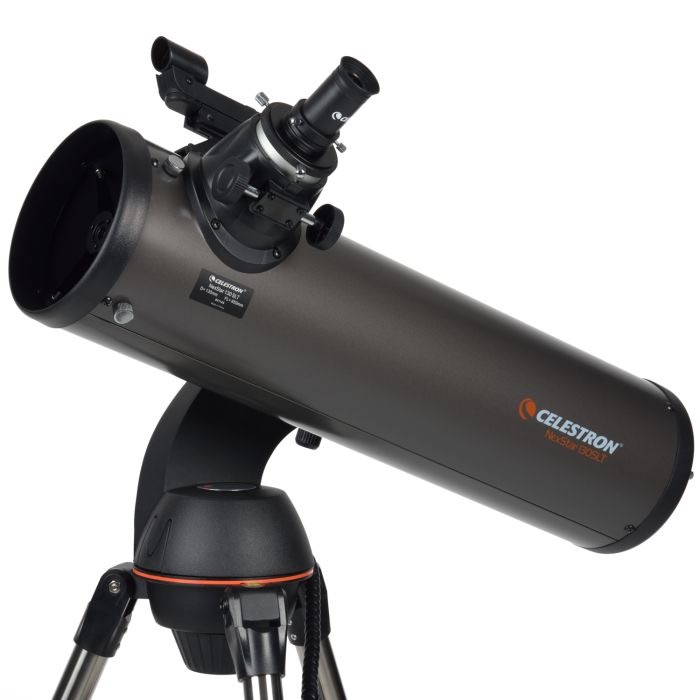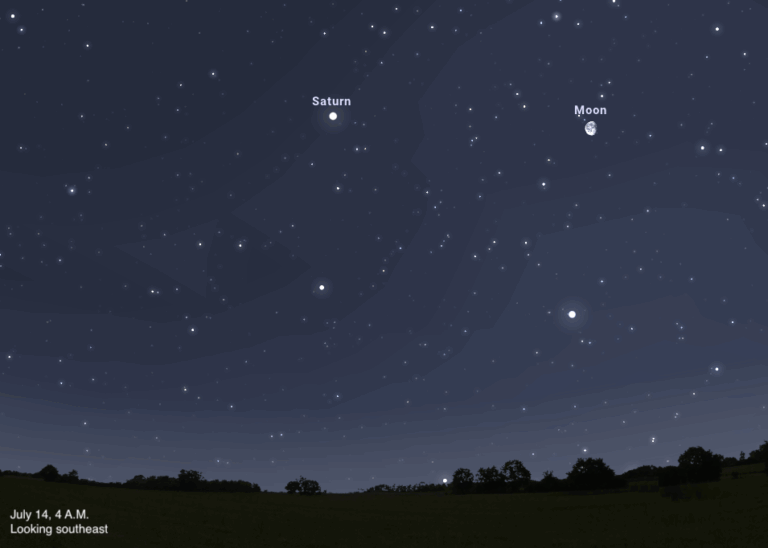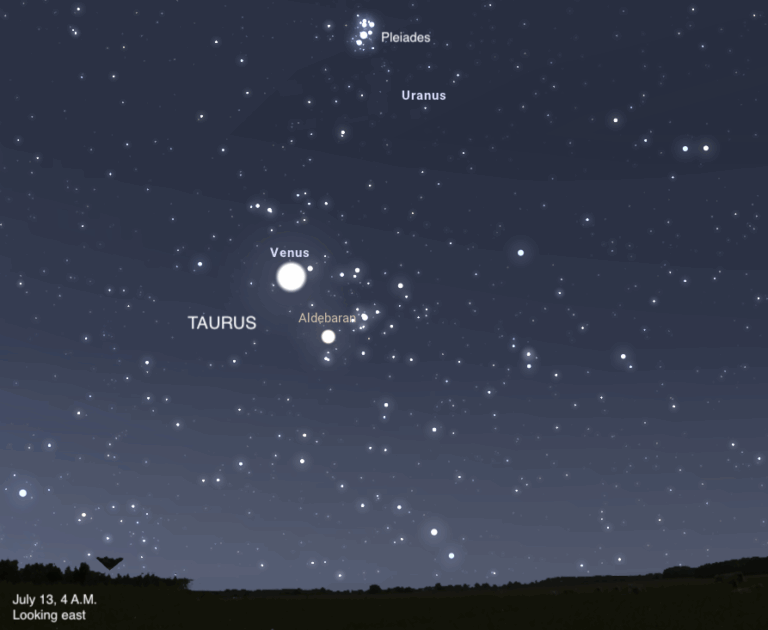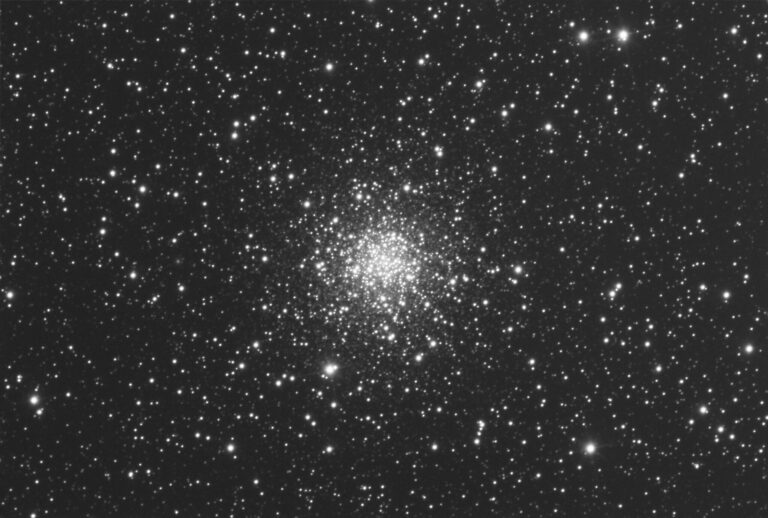
Key Takeaways:
- Larger telescope lenses/mirrors show brighter, clearer images.
- Different telescope types (refractor, reflector, catadioptric) have various pros and cons.
- Easy setup and transport are important for enjoyable stargazing.
- “The best telescope is the one that meets your needs and ignites your passion for the stars.” said an unnamed Astronomy.com editor.
Note: This post contains affiliate links. When you buy a product through the links on this article, we may earn a commission.
Welcome to the world of stargazing! If you’re on a quest to find the best telescope for $500 or less, you’ve come to the right place. Budget telescopes are a fantastic gateway into astronomy, but it’s essential to know what to expect. In this comprehensive guide, we’ll explore the key factors to consider when buying a budget telescope, as well as provide recommendations for our favorite telescopes for $500 or less.
We understand that each astronomer has unique needs and preferences, so our recommendations cover a range of styles and capabilities. And whether you’re looking to explore the Moon, planets, distant galaxies, or all of the above, our guide is here to help you make an informed decision and get the most out of your stargazing experience.
What to consider when buying a budget telescope
Focus on more than just the price. Factors such as the type of telescope, aperture size, and mount type all play significant roles in the quality of your observing experience.
A good budget telescope should offer a balance between affordability and functionality, providing clear images and ease of use without a hefty investment. Below are just some of the most important factors to consider when purchasing a budget telescope.
- Aperture Size: This is the diameter of the telescope’s lens or mirror. A larger aperture means more light can enter, resulting in brighter, clearer images, especially in low-light conditions. It’s a crucial factor in determining a telescope’s ability to resolve fine detail in distant objects.
- Type of Telescope: There are three primary types: refractors (lens), reflectors (mirrors), and compound, or catadioptric, telescopes. Each type has its strengths and weaknesses in terms of image quality, maintenance, and portability.
- Mount Type: The mount is crucial for stabilizing your telescope. Altazimuth mounts are simple and intuitive, making them perfect for beginners. On the other hand, equatorial mounts are finely suited for smoothly tracking celestial objects as Earth rotates.
- Optical Quality: Beyond aperture, the quality of the optics determines how sharp and accurate your views will be. High-quality lenses and mirrors with proper coatings can significantly enhance your observing experience.
- Ease of Use and Portability: Consider how easy it is to set up, use, and transport the telescope. Telescopes that are cumbersome to set up or difficult to operate can detract from your stargazing experience.
- Additional Accessories: Check what accessories are included with each telescope, such as eyepieces, a finder scope, or a tripod. These can add value and functionality to your telescope.
Related: The best telescopes for $1,000 or less | The best telescopes for kids | The best expensive telescopes if you want to splurge
So here is our list of recommended telescopes for $500 or less. These have been carefully selected and vetted by our editors at Astronomy.com based on performance, user experience, and overall value for your money. Let’s go!
Best telescopes for $500 or less
- Features and Benefits: Comes with a computerized hand control and pre-assembled tripod for easy setup. It can locate and track over 4,000 celestial objects automatically.
- What to Keep in Mind: Requires some knowledge of technology for optimal use.
- Why We Recommend It: Ideal for those seeking a sophisticated telescope with automated features for extensive exploration of the night sky.
- Product Details:
- Type: Reflector
- Mount: Computerized
- Aperture: 130mm
- Focal length: 650mm
- Price: $499.95
Celestron StarSense Explorer 130AZ
- Features and Benefits: This telescope features the innovative StarSense Explorer technology, which allows users to explore the night sky using their smartphone, with no prior experience required. The telescope provides clear views of planets, nebulae, star clusters, and more, both in urban and dark sky environments. It includes dual-axis slow-motion controls for smooth tracking and easy navigation.
- What to Keep in Mind: While user-friendly, the StarSense technology requires a compatible smartphone.
- Why We Recommend It: This telescope is an excellent choice for beginners and those interested in a more interactive and guided stargazing experience. Its integration with smartphone technology makes it a modern and convenient option for all ages.
- Product Details:
- Type: Newtonian Reflector
- Mount: Altazimuth
- Aperture: 130mm
- Focal length: 650mm
- Price: $399.95
Best telescopes for $400 or less
- Features and Benefits: Features high-quality 130mm optics for solar system and deep-space viewing. Includes slow-motion control knobs for precision adjustments.
- What to Keep in Mind: It weighs in at 28 lbs, which might affect portability.
- Why We Recommend It: Offers a balance between advanced features and ease of use, making it suitable for intermediate-level astronomers.
- Product Details:
- Type: Reflector
- Mount: Equatorial
- Aperture: 130mm
- Focal length: 650mm
- Price: $349.95
- Features and Benefits: Powerful refractor telescope with fully-coated glass optics. Lightweight and includes a tripod and StarPointer finderscope.
- What to Keep in Mind: Its focal ratio of f/6.5 may not be ideal for all types of celestial viewing.
- Why We Recommend It: Good for both beginners and intermediate users due to its ease of setup and comprehensive features.
- Product Details:
- Type: Refractor
- Mount: Altazimuth
- Aperture: 102mm
- Focal length: 660mm
- Price: $349.95
Best telescopes for $300 or less
- Features and Benefits: This refractor telescope offers bright, clear images, suitable for both terrestrial and celestial viewing. It comes with multiple eyepieces and an easy-to-use Altazimuth mount.
- What to Keep in Mind: Its larger size may make it less portable than some other models.
- Why We Recommend It: The ease of assembly and user-friendly features make it a great option for beginners who want a more substantial telescope without a hefty price tag.
- Product Details:
- Type: Refractor
- Mount: Altazimuth
- Aperture: 102mm
- Focal length: 600mm
- Price: $269.95
- Features and Benefits: Features a German Equatorial Mount with slow-motion controls for accurate pointing. Compact and portable, ideal for travel.
- What to Keep in Mind: Basic model, but with a modest price tag.
- Why We Recommend It: An excellent entry-level telescope, offering a wide field view and good magnification options.
- Product Details:
- Type: Newtonian Reflector
- Mount: Equatorial
- Aperture: 127mm
- Focal length: 1000mm
- Price: $219.95
Best telescopes for $200 or less
Orion StarBlast II 4.5 Equatorial Reflector Telescope
- Features and Benefits: Comes with a 114mm aperture and is easy to transport, offering stunning views. Includes two Sirius Plossl eyepieces for a range of magnification.
- What to Keep in Mind: Heavier than previous models, may require some setup.
- Why We Recommend It: A great choice for families and beginners due to its user-friendly design and excellent viewing capabilities.
- Product Details:
- Type: Reflector
- Mount: Equatorial
- Aperture: 114mm
- Focal length: 450mm
- Price $199.99
- Features and Benefits: Easy to move alt-azimuth yoke mount, ideal for beginners. Comes with multiple eyepieces and a zoom lens.
- What to Keep in Mind: Basic model, more suitable for beginners than advanced users.
- Why We Recommend It: Affordable and user-friendly, making it one of the best beginner telescopes under $100.
- Product Details:
- Type: Reflector
- Mount: Altazimuth
- Aperture: 80mm
- Focal length: 800mm
- Price: $139.99
Best telescopes for $100 or less
National Geographic Compact 76mm Telescope
- Features and Benefits: This compact telescope is ideal for beginners and travelers. It offers a wide-field lens and is highly portable, making it perfect for camping, hiking, or backyard stargazing. The design is user-friendly, and the telescope provides clear views of celestial bodies.
- What to Keep in Mind: Its compact size may limit the range and depth of celestial viewing when compared to larger telescopes.
- Why We Recommend It: It’s one of the best options for those starting their astronomy journey or needing a portable scope. Easy to set up and use, it’s great for quick observations.
- Product Details:
- Type: Reflector
- Mount: Altazimuth Dobsonian
- Aperture: 76mm
- Focal Length: 350mm
- Price: $59.99
Celestron FirstScope Telescope
- Features and Benefits: This is a tabletop reflector telescope that’s compact, easy to operate, and perfect for young beginners. The FirstScope pays homage to Galileo and others in the exterior design, which can be inspiring for kids learning about the history of astronomy.
- What to Keep in Mind: Its small size means less light-gathering capability, so it’s best for viewing the Moon and brighter planets.
- Why We Recommend It: It’s an excellent, very affordable first telescope that’s designed to be picked up and used with no fuss, making it ideal for younger children.
- Product Details:
- Type: Reflector
- Mount: Dobsonian-style tabletop mount
- Aperture: 76mm
- Focal length: 300mm
- Price: $49.98
Best overall budget telescope
- Features and Benefits: This telescope offers a perfect balance between advanced features and ease of use. It’s equipped with a fully computerized hand control and a pre-assembled tripod, allowing quick setup and ease of use. The telescope automatically locates and tracks more than 4,000 celestial objects, making sky exploration seamless for both beginners and experienced users.
- Why It Stands Out: The combination of a large 130mm aperture with computerized tracking in this price range makes it exceptional for viewing detailed celestial objects. The user-friendly interface and automated features reduce the learning curve for new astronomers. The Celestron NexStar 130SLT strikes an excellent balance between advanced features, ease of use, and affordability, making it an ideal choice for those seeking a comprehensive stargazing experience at an affordable price.
Care and maintenance of your telescope
Regular care extends the life of your telescope. Below are some simple maintenance and storage best practices that you should follow to keep your telescope at its best.
- Cleaning Lenses and Mirrors: Handle optics carefully and clean them only when necessary, using proper lens-cleaning techniques and materials to avoid scratches.
- Proper Storage: Store your telescope in a cool, dry place to prevent moisture and dust accumulation. Protective covers are recommended for long-term storage.
- Regular Maintenance Checks: Periodically check and adjust the alignment of your optics (collimation), especially for reflector telescopes.
- Avoiding Condensation: Allow your telescope to acclimatize to outdoor temperatures before use to prevent condensation on lenses and mirrors.
- Handling and Transportation: Always handle your telescope with care, especially when transporting it to and from observation sites. Use protective cases when possible.
Frequently Asked Questions (FAQs)
How did we pick these telescopes?
To make our selections, we considered user reviews for real-world insights, expert opinions from the Astronomy staff, and overall value for money. Additionally, we looked at the quality of optics, ease of use, and the versatility of each model to ensure a wide range of options suitable for different needs and experience levels.
What is the best budget telescope for beginners?
The Celestron StarSense Explorer 130AZ is our top recommendation for beginners. Its innovative StarSense technology, which integrates with a smartphone, making it exceptionally user-friendly. This feature, combined with clear views of a wide range of celestial objects, provides an interactive and guided stargazing experience that’s perfect for novices.
What is the best budget telescope to see planets?
For planetary viewing, the Celestron AstroMaster 130EQ stands out. It offers high-quality 130mm optics ideal for observing planets, and its equatorial mount provides stability and precision. This telescope is an excellent choice for intermediate astronomers who want to explore the solar system in detail.
What is the best budget telescope for deep space?
When it comes to deep space observation, the Celestron NexStar 130SLT excels. Its large aperture and computerized tracking system make it ideal for viewing details in celestial objects beyond our solar system. Its automated features also make it accessible to beginners while providing the functionality required by more experienced users.
Whether you’re a beginner or a seasoned stargazer, there’s a budget telescope out there for you. And remember, the best telescope is the one that meets your needs and ignites your passion for the stars. Happy stargazing!









